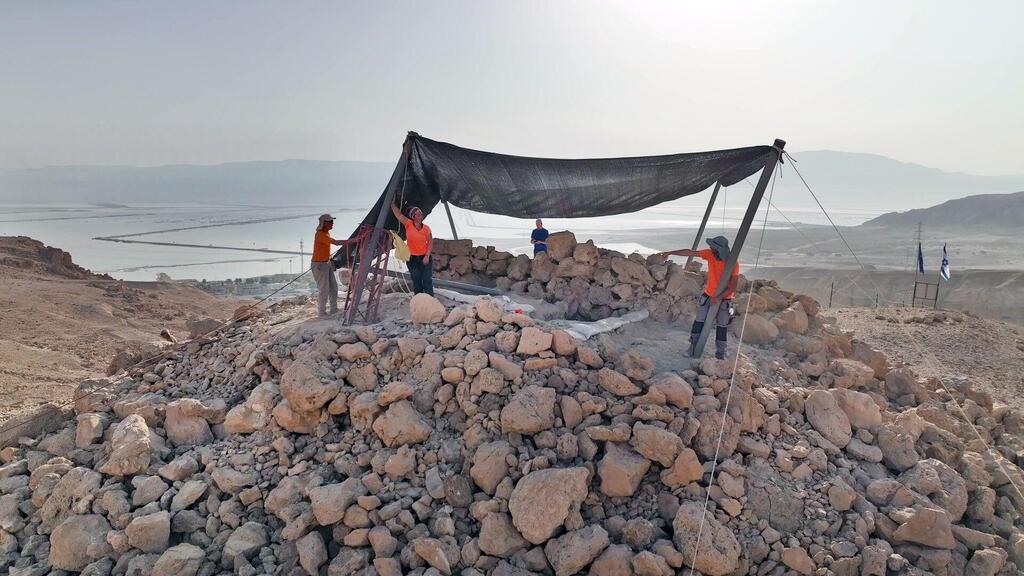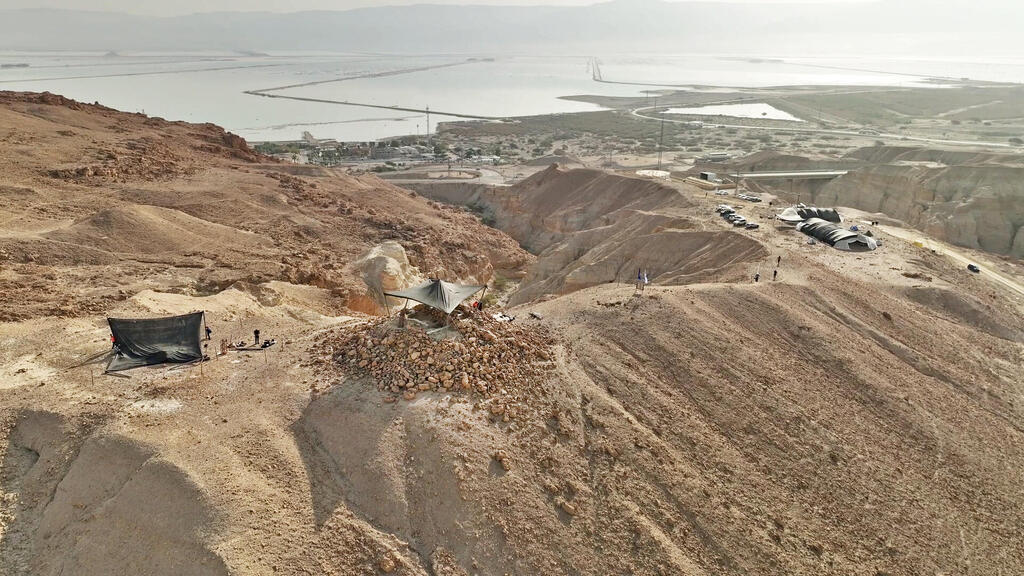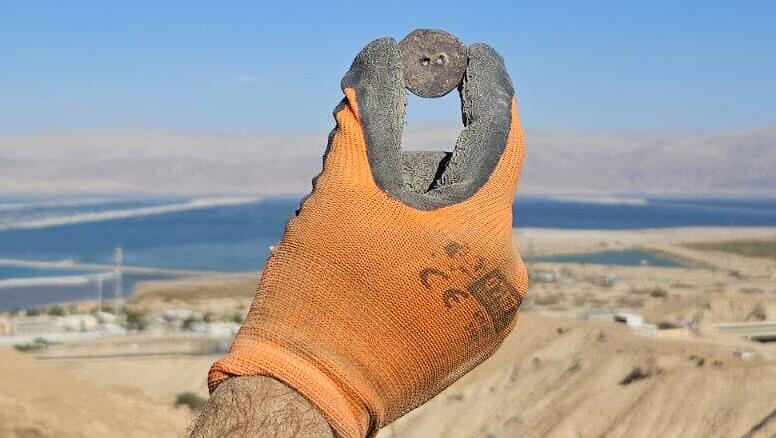Getting your Trinity Audio player ready...
A massive pyramid-shaped structure and a roadside station dating back approximately 2,200 years — to the era of the Ptolemaic and Seleucid rulers in Judea — are being unearthed north of Nahal Zohar in the Judean Desert. The excavation, led by the Israel Antiquities Authority and the Heritage Ministry, includes volunteers from across the country.
At the Zohar Fortress site, near the Dead Sea, archaeologists have discovered fragments of written papyrus documents, bronze coins from the reign of Antiochus IV and Ptolemaic kings, weapons, wooden artifacts and pieces of fabric.
6 View gallery


The ancient structure near Nahal Zohar
(Photo: Matan Toledano, Israel Antiquities Authority)
Matan Toledano, Dr. Eitan Klein and Amir Ganor, who are overseeing the excavation on behalf of the Israel Antiquities Authority, described the pyramid — about six meters (20 feet) high — as one of the most intriguing and significant finds in the Judean Desert.
"This is one of the richest and most fascinating archaeological excavations in the region. The structure we've uncovered is massive, with hand-carved stones, each weighing hundreds of kilograms," they said in a statement.
"In the first week alone, volunteers found historic written records, unique bronze artifacts and well-preserved ancient furniture, thanks to the desert climate. This site is incredibly promising — new discoveries emerge constantly and we're eager to see what the next three weeks will reveal," according to the archaeologists.
The Nahal Zohar excavation is part of a large-scale operation to protect archaeological artifacts in the Judean Desert from looting. The national project, launched eight years ago, is jointly funded by the Heritage Ministry, the Civil Administration’s Archaeology Unit and the Israel Antiquities Authority.
Get the Ynetnews app on your smartphone: Google Play: https://bit.ly/4eJ37pE | Apple App Store: https://bit.ly/3ZL7iNv
A dedicated survey team from the Antiquities Theft Prevention Unit systematically scanned 180 kilometers of desert cliffs, identifying around 900 caves. Using rappelling equipment, advanced technology and specialized documentation methods, archaeologists have uncovered thousands of rare items, including ancient scrolls, papyrus fragments, wooden artifacts, weapons, textiles, leather goods, woven mats and coin hoards.
"This excavation is reshaping our understanding of the site's history," said Toledano, Klein and Ganor. "Contrary to previous theories that attributed the structure to the First Temple period, it appears to have been built later, during the Hellenistic period under Ptolemaic rule. We still don't know for certain what its function was.
'This excavation is reshaping our understanding of the site's history'
“Was it a military outpost guarding a major trade route for transporting salt and asphalt from the Dead Sea to the coast? Or, at some point, did this massive structure atop the mountain serve as a tomb marker or an ancient monument? It remains a fascinating historical mystery and we're thrilled that the public is participating in uncovering the answers."
6 View gallery


Piece of papyrus fragment with Greek writing found in the excavation
(Photo: Emil Eljam, Israel Antiquities Authority)
Israel Antiquities Authority Director Eli Eskozido called the discovery and excavation efforts groundbreaking. "The Judean Desert survey is one of the most significant archaeological projects in the country's history. The findings are extraordinary, with immense historical and scientific value,” he said.
“With Passover approaching and spring beginning, I invite Israelis to join us. In these challenging times, a few days of exploration and discovery in the Judean Desert can be a unifying and uplifting experience for everyone,” he added.






